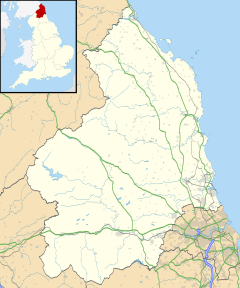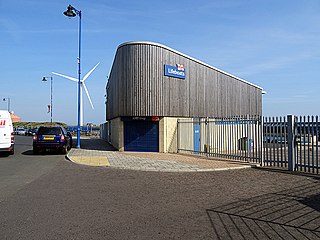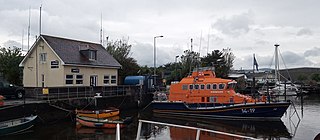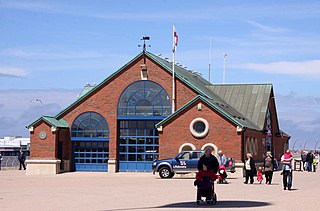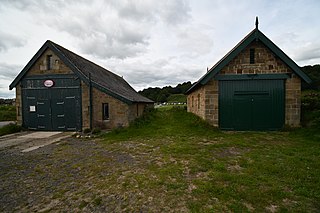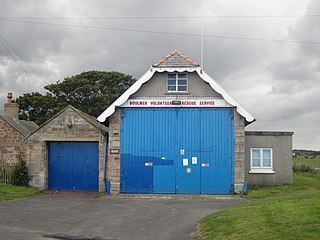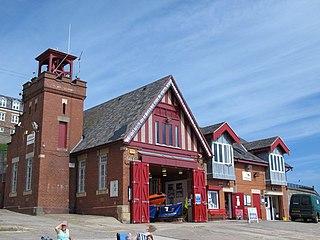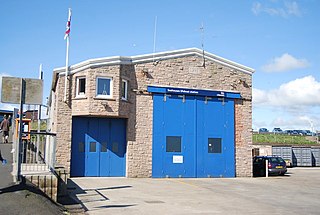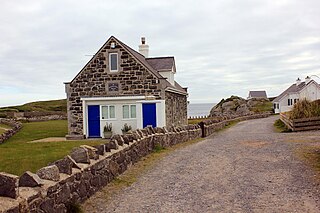History
After the founding of the Royal National Institution for the Preservation of Life from Shipwreck in 1824, and later when it became the RNLI, it wasn't uncommon for any acts of gallantry at sea, whether by lifeboat, or other means, to be rewarded with the RNLI Gold or Silver Medal. For the rescue of 6 men from the vessel Julius on 23 November 1861, which was aground and breaking up on Broad Sand Rocks, Thomas Brown (Big Tom), a Cresswell boatman, was awarded the RNLI Silver Medal. [2]
Some years later, in 1874, James Brown of Cresswell, and his 3 sons, were drowned when their fishing boat overturned within sight of the shore. James was the brother of Thomas. At the inquiry, it was stated that no lifesaving equipment was available at Cresswell, nor was there a Barometer [3] to indicate the weather. [4]
An appeal was made to the RNLI for a lifeboat to be stationed at Cresswell, which was agreed. A 30-foot 8-oar self-righting pulling and sailing lifeboat (one with oars and sails) was constructed by Forrestt of Limehouse, London costing £328-18s-0d. A launching carriage cost a further £114-13s-0d. Addison John Baker-Cresswell, of Cresswell Hall, provided the site and dressed stone for the construction of a boathouse, which cost £154-11s-4d. A major benefactor was Mr Thomas Hackwood of Sydenham, who requested the boat be named Old Potter. Thomas Brown (Big Tom) was appointed Coxswain. [4]
In July 1888, the Institution received an anonymous donation of £2000, enough for the provision of three lifeboats. The benefactor chose not to give his name, but in accordance with his wishes, the three boats were named The Three Sisters (ON 199), placed at Courtown, The Three Brothers (ON 241) assigned to Whitelink Bay, and Ellen and Eliza (ON 245), which arrived on station at Cresswell on 24 August 1889. [5]
The new lifeboat was a 10-oared self-righting lifeboat, with two sails, and a water pump to remove water from the boat. Thomas Brown was still Coxswain, with no fewer than 8 other crew members with the surname Brown. Thomas retired in 1890, being awarded a Silver second-service clasp. His replacement Henry Brown served until 1893, handing over to Adam Brown, the son of Thomas. [4] [6]
Adam Brown would remain Coxswain until 1908. He had been a member of the crew since 1875. His retirement would come just before a new boat was to arrive in Cresswell, a 34-foot 10-oar Dungeness-class lifeboat, designed by Felix Rubie, [7] costing £723, funded from the legacy of Mrs M.A.Vaughan of Highbury. The boat was named Martha (ON 599). Adam would be succeeded by William Brown, another crew member since 1875. [4] [6]
William would be awarded The Thanks of the Institution inscribed on Vellum for a service in 1914, and continue as Coxswain until his retirement in 1925. Robert Brown would take over for a short time in 1925, and then hand over to Addison Brown, who would serve as Coxswain until 1944. [4]
With motor-powered lifeboats now at Amble to the north, and Newbiggin to the south, Cresswell Lifeboat Station was closed in 1944. The Cresswell lifeboats had launched 58 times, and saved 91 lives. Martha (ON 599) was sold out of service, being converted to be a motor yacht named Cresswell. [1]
The boathouse is still in use, these days as the Cresswell Village Hall. [8]
Margaret Armstrong
No mention of the Cresswell lifeboat would be complete without the mention of Margaret Armstrong (née Brown). Margaret was the daughter of James Brown, who had been lost with three of her brothers, in 1874. In 1876, in heavy rain and gale force conditions, she had already helped drag the lifeboat a mile north up the beach, for the lifeboat to launch to the aid of the vessel Gustaf. With all men from Cresswell involved, Margaret, along with two younger girls, was despatched to summon the Newbiggin Rocket Brigade, running barefoot along the shortest route, a distance of 4 or 5 miles, through the swollen river Lyne, and in terrible conditions. 14 lives were saved from the Gustaf. Margaret was awarded a Silver teapot for her actions. For over 50 years, she would always respond to the Maroon (rocket) to help launch the boat, and even at the age of 70, had never missed a quarterly practice or service launch. Margaret was awarded the Gold Brooch, and the Institution's Record of Thanks. She was featured in a film in 1921, named by the press as 'The Second Grace Darling'. Margaret died in 1928 aged 79. A plaque in her memory was placed on the wall of St Bartholomew's Church, Cresswell by the RNLI in 1981. [4] [9]


